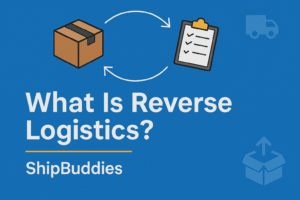Subscription box services have seen a significant increase in popularity in recent years, offering a convenient and exciting way for customers to receive a curated selection of products on a regular basis. However, managing inventory and forecasting demand can be a challenging aspect of running a successful subscription box business.
To ensure that you have the right products in stock to meet customer demand and avoid stockouts or overstocking, it is essential to have a strong inventory management and demand forecasting system in place.
In this article, we will provide you with a comprehensive overview of the key strategies and techniques for managing inventory and forecasting demand as part of your subscription box service order fulfillment process. Whether you are just starting out or looking to improve your existing operations, this guide will provide valuable insights to help you succeed.
Understanding The Importance Of Inventory Management And Demand Forecasting In Subscription Box Services
If you’re running a subscription box service, you know how important it is to get things just right. From selecting the perfect products to putting together a cohesive monthly box, there’s a lot to consider. But one key aspect that often gets overlooked is inventory management and demand forecasting.
Think about it – if you run into a stock out of a popular item, your customers are going to be disappointed. On the other hand, if you have too much of an item that isn’t selling, you’re just tying up valuable resources. That’s where inventory management and demand forecasting come in – they help ensure you have the right products in stock to meet customer demand.
Inventory management involves keeping track of the products you have in stock, as well as the lead times and reordering points for those items. By having a handle on your inventory levels, you can avoid stockouts and make sure you have the products your customers want when they want them.
Demand forecasting, on the other hand, is all about predicting what your customers are going to want in the future. By analyzing customer behavior and trends, you can get a better understanding of what’s likely to be popular and what’s not. This information is crucial in helping you make decisions about what products to stock and how much to order.
In short, inventory management and demand forecasting are two sides of the same coin. Together, they help you ensure you have the right products in stock to meet customer demand, avoid stockouts and overstocking, and ultimately improve your overall operations.
Analyzing Customer Behavior And Trends To Improve Demand Forecasting Accuracy
When it comes to demand forecasting for subscription box services, understanding your customers’ behavior and trends is crucial. After all, the goal is to predict what your customers are going to want in the future, so you can ensure you have the right products in stock to meet their demand. But how do you do that? By analyzing customer behavior and trends, of course!
One way to do this is by tracking sales data for your subscription box service. You can look at things like what products are selling, when they’re selling, and to whom they’re selling. This information can help you identify patterns and trends that you can use to make better demand predictions.
Another approach is to gather data from customer feedback and surveys. This could include information on what customers liked and didn’t like about past boxes, what products they’re hoping to see in future boxes, and more. This information can be incredibly valuable in helping you understand your customers’ preferences and making more accurate demand forecasts.
It’s also a good idea to pay attention to external factors that could impact demand. For example, if a new product is launching that you think would be a good fit for your subscription box, you’ll want to factor that into your demand forecasts. Or, if there’s a change in the market or the economy, you’ll want to take that into consideration when making demand predictions.
By using a combination of sales data, customer feedback, and external factors, you can get a more complete picture of your customers’ behavior and trends. And with that information, you can make more accurate demand forecasts for your subscription box service.
Implementing Inventory Management Systems And Tools To Track Stock Levels, Lead Times, And Reordering Points
When it comes to running a successful subscription box service, keeping track of your inventory is key. But let’s be real, manually tracking stock levels, lead times, and reordering points can be a real pain. That’s where inventory management systems and tools come in – they make it easier to keep track of your inventory and ensure you have what you need, when you need it.
There are a variety of inventory management systems and tools available, ranging from basic spreadsheets to more sophisticated software solutions. When choosing one, consider your specific needs and how you plan to use the tool. For example, do you need something that integrates with your existing systems, or do you just need something simple to track your inventory levels?
Once you’ve chosen your tool, it’s time to set it up. Start by inputting all of your products, including details like SKU, lead times, and reordering points. Make sure to also include information about your suppliers, so you know who to contact when it’s time to reorder.
Next, it’s time to start using your inventory management system. This could include things like tracking stock levels, creating purchase orders, and setting up alerts for when it’s time to reorder products. You can also use your system to generate reports that give you a clear picture of your inventory levels and help you make informed decisions.
And don’t forget – your inventory management system should be a living, breathing tool that you use and update on a regular basis. So make sure you’re using it consistently and keeping it up-to-date with the latest information.
By implementing an inventory management system, you’ll be able to track your stock levels, lead times, and reordering points with ease. This will help you avoid stockouts, overstocking, and other issues that can impact your subscription box service.
Using Data And Analytics To Optimize Inventory Levels And Improve Decision-making Processes
Data and analytics can be a game-changer when it comes to optimizing inventory levels and improving decision-making for a subscription box service. By using data and analytics, you can gain valuable insights into your inventory and make informed decisions that can help you improve your bottom line.
One way to use data and analytics is to track your sales data. This could include things like sales by product, sales by customer segment, and sales over time. This information can help you identify trends and patterns, and make better decisions about what to stock and when.
Another way to use data and analytics is to track your inventory levels. This could include things like tracking stock levels by product, tracking lead times, and tracking reordering points. This information can help you make better decisions about when to reorder products, how much to order, and more.
Data and analytics can also be used to track your customer behavior and preferences. For example, you could use data to track which products are most popular with your customers, which customers are most likely to purchase from you again, and more. This information can be incredibly valuable in helping you make better decisions about what products to stock and how to market your subscription box service.
And don’t forget about using data and analytics to track your competition. By keeping an eye on what your competitors are doing, you can stay ahead of the game and make better decisions about what products to stock and how to market your subscription box service.
By using data and analytics, you can gain valuable insights into your inventory and make informed decisions that can help you optimize your inventory levels and improve your bottom line.
Incorporating Safety Stock And Buffer Stock Into Inventory Management To Reduce The Risk Of Stockouts
One of the biggest challenges you’ll face is avoiding stockouts. Nobody wants to disappoint their customers by not having the products they need, right? That’s where incorporating safety stock and buffer stock into how you manage your inventory on hand comes in – it can help reduce the risk of stockouts and keep your customers happy.
But what exactly is safety stock and buffer stock? Safety stock is the extra stock you keep on hand to help ensure you don’t run out of products in case of unexpected spikes in demand. Buffer stock, on the other hand, is the extra stock you keep on hand to help ensure you have a steady flow of products and can meet your customers’ needs even if there are unexpected delays in your supply chain.
So how do you incorporate safety stock and buffer stock into your inventory management? First, you’ll need to determine how much safety stock and buffer stock you need. This could depend on things like your average lead time, your sales velocity, and more. Then, you’ll need to factor in this extra stock when you’re making decisions about how much to order and when to order it.
And don’t forget to regularly review and adjust your safety stock and buffer stock levels as needed. This could involve things like adjusting your safety stock levels based on changes in demand or adjusting your buffer stock levels based on changes in your supply chain.
Developing Flexible Inventory Management Strategies To Accommodate Unexpected Changes In Demand
Running a subscription box service can be a wild ride – one minute you’re selling out of a product, and the next minute you’re stuck with a whole bunch of extra stock. That’s why it’s so important to develop flexible inventory management strategies that can accommodate unexpected changes in demand.
So what does a flexible inventory management strategy look like? It could involve things like having a range of suppliers for your products so you’re not relying on just one source, using data and analytics to track customer behavior and trends, and having contingency plans in place for when things don’t go according to plan.
It’s also important to be open to trying new things and experimenting with your inventory management strategies. For example, you could try implementing a just-in-time (JIT) inventory system, which involves ordering products only when they’re needed. Or, you could try using a consignment arrangement with your suppliers, which involves your supplier holding onto the products until they’re sold.
And don’t forget to regularly review and adjust your inventory management strategies as needed. This could involve things like adjusting your safety stock levels, trying new suppliers, or experimenting with different inventory management systems.
Utilizing Forecasting Models, Such As Moving Averages, Exponential Smoothing, And Arima, To Improve Demand Predictions
When it comes to running a successful subscription box service, it’s crucial to be able to accurately predict demand for your products. That’s where utilizing forecasting models comes in – they can help you make more informed decisions about how much stock to order and when to order it.
So what are some common forecasting models that you could use? There’s moving averages, exponential smoothing, and ARIMA (Autoregressive Integrated Moving Average) – to name just a few.
Moving averages involves taking the average of past demand data to predict future demand. For example, you could take the average of the past three months’ worth of sales data to predict demand for the next month.
Exponential smoothing is a time series forecasting method that uses historical data to make predictions about future values. It is a simple, yet effective approach to demand forecasting that can be used by subscription box services to improve their inventory management.
The basic idea behind exponential smoothing is to give more weight to recent data points and less weight to older data points. This helps to capture short-term trends and changes in demand, while smoothing out the effect of random fluctuations in the data.
To implement exponential smoothing, you start with a simple average of the historical data and then adjust it over time to account for changes in demand. There are several different types of exponential smoothing models, including simple exponential smoothing, Holt’s linear exponential smoothing, and Holt-Winters exponential smoothing.
ARIMA, or Autoregressive Integrated Moving Average, is a popular time series forecasting model that is used to make predictions about future values based on historical data. ARIMA models take into account both the past data and any trends or patterns in the data, making them a powerful tool for demand forecasting in the subscription box industry.
One of the key features of ARIMA models is that they can handle non-stationary data, which is data that changes over time. For example, demand for a particular product might increase or decrease over time, and ARIMA models can help identify and adjust for these changes in demand.
To use ARIMA, you need to choose three parameters: the order of differencing (d), the order of the autoregression (p), and the order of the moving average (q). These parameters control the complexity of the model and determine how it will adjust for trends and patterns in the data.
Once you’ve chosen your parameters, you’ll need to fit the ARIMA model to your historical data, which involves finding the values of the model parameters that give the best fit to the data. Then, you can use the fitted ARIMA model to make predictions about future demand.
It’s important to note that ARIMA models can be complex and require a good understanding of statistics and time series analysis to use effectively. However, for those with the expertise and resources, ARIMA can be a powerful tool for improving demand forecasting accuracy in the subscription box industry.
When deciding which forecasting model to use, it’s important to consider things like the size and complexity of your data, the level of accuracy you need, and the resources you have available. And don’t forget to regularly review and adjust your forecasting models as needed.
Measuring The Success Of Your Inventory Management And Demand Forecasting Strategies And Making Continuous Improvements
Measuring the success of your inventory management and demand forecasting strategies is critical for ensuring that your subscription box service is operating at peak efficiency. After all, there’s no point in putting in all the time and effort to develop and implement these strategies if you can’t see how they’re performing and make improvements as needed.
One of the key metrics to track is inventory turnover, which measures how quickly your inventory is moving. A high inventory turnover rate is generally a good thing, as it means that you’re selling products quickly and efficiently. However, if your inventory turnover rate is low, it could indicate that you’re holding on to too much stock, which is tying up valuable resources that could be used elsewhere.
Another important metric to track is stockout rate, which measures the percentage of time that you’re out of stock of a particular item. A high stockout rate is a sign that you need to improve your demand forecasting and inventory management, as it means that you’re missing out on potential sales.
In addition to tracking these metrics, it’s also important to regularly review your inventory management and demand forecasting processes to identify areas for improvement. This might involve making changes to your forecasting models, adjusting your reordering points, or updating your inventory management software.
Conclusion
Managing inventory and forecasting demand is a crucial aspect of running a successful subscription box business. By implementing the strategies and techniques outlined in this article, businesses can ensure they have the right products in stock to meet customer demand, minimize stockouts and overstocking, and ultimately improve their overall operations. Regular reviews and evaluations, as well as collaboration with suppliers and manufacturers, will also play a key role in ensuring effective inventory management and demand forecasting processes.







